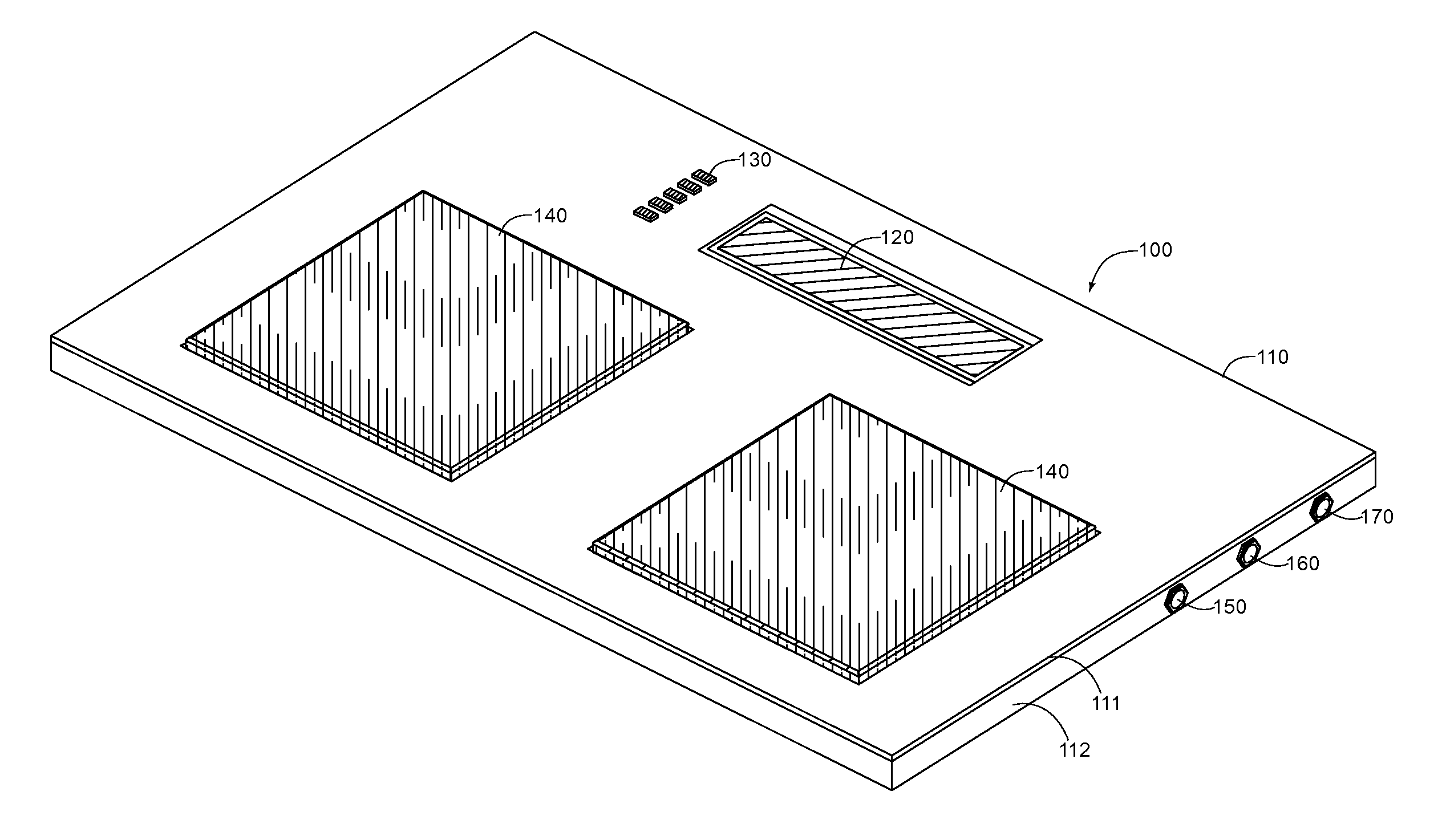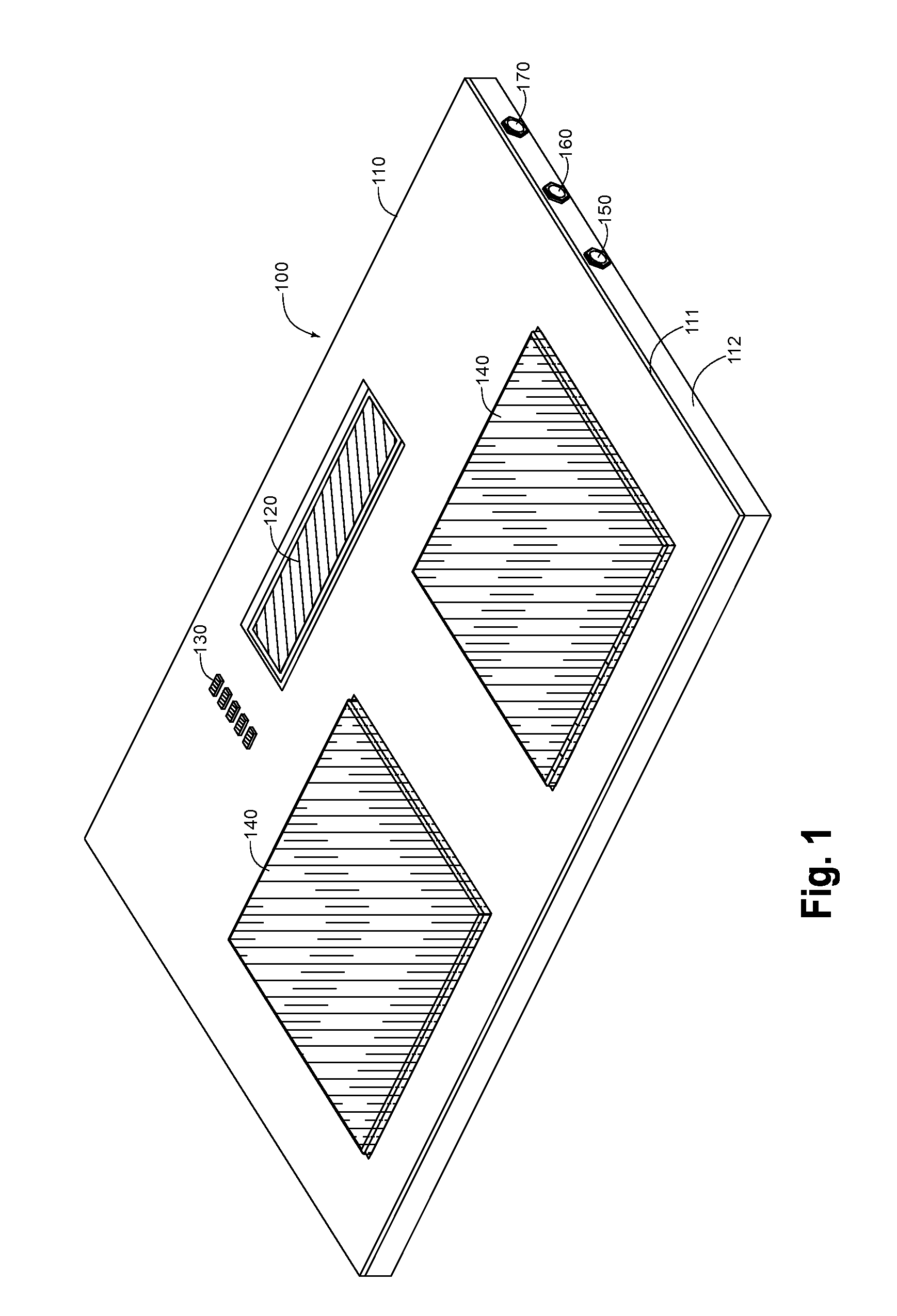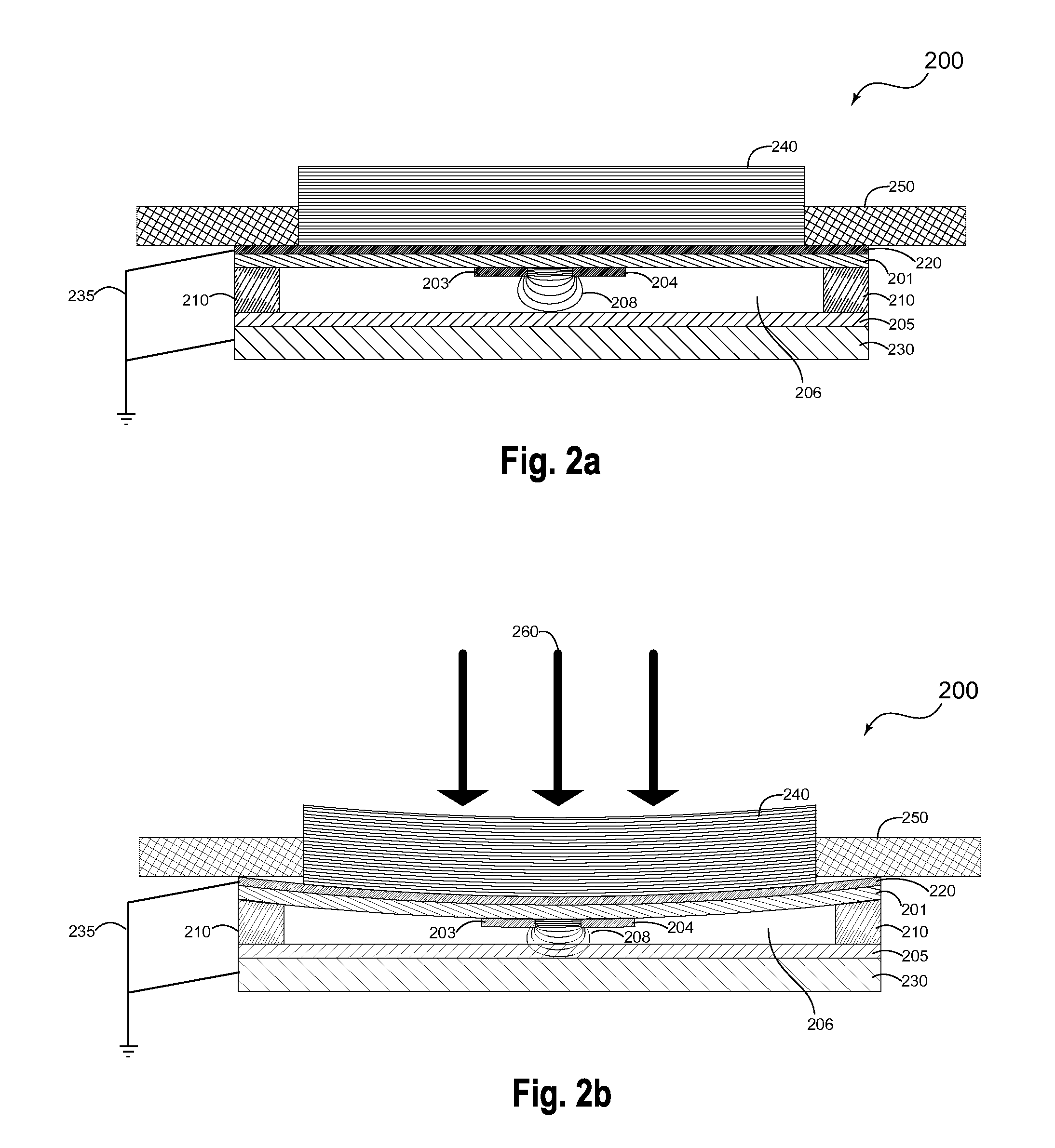Foot controller
a foot controller and foot technology, applied in the field of foot controllers, can solve the problems of non-ergonomically-optimal design of foot controllers, large size of foot controllers, and fatigue problems of performers, and achieve the effect of reducing manufacturing costs and increasing the degree of robustness and reliability
- Summary
- Abstract
- Description
- Claims
- Application Information
AI Technical Summary
Benefits of technology
Problems solved by technology
Method used
Image
Examples
Embodiment Construction
[0035]The foot controller and the method for generating control signals from the foot controller will be now described in detail with reference to the accompanying drawings. Wherever possible, the same reference numbers will be used throughout the drawings to refer to same or like parts, elements or operating steps.
[0036]FIG. 1 shows a foot controller 100 according to an exemplary embodiment of the present invention. The controller may comprise a fixed housing 110. Housing 110 may comprise one or more elements, such as a top part 111 and a bottom part 112 connected to each other by means of screws or any other equivalent means, and may be constructed out of metallic, plastic or other materials. In an exemplary embodiment of the present invention the housing is made of steel. The skilled person will not have any difficulties in building the housing out of other materials such as aluminium, plastic, etc. The exemplary foot controller 100 may feature a number of connectors 150 to 170, ...
PUM
 Login to View More
Login to View More Abstract
Description
Claims
Application Information
 Login to View More
Login to View More - R&D
- Intellectual Property
- Life Sciences
- Materials
- Tech Scout
- Unparalleled Data Quality
- Higher Quality Content
- 60% Fewer Hallucinations
Browse by: Latest US Patents, China's latest patents, Technical Efficacy Thesaurus, Application Domain, Technology Topic, Popular Technical Reports.
© 2025 PatSnap. All rights reserved.Legal|Privacy policy|Modern Slavery Act Transparency Statement|Sitemap|About US| Contact US: help@patsnap.com



